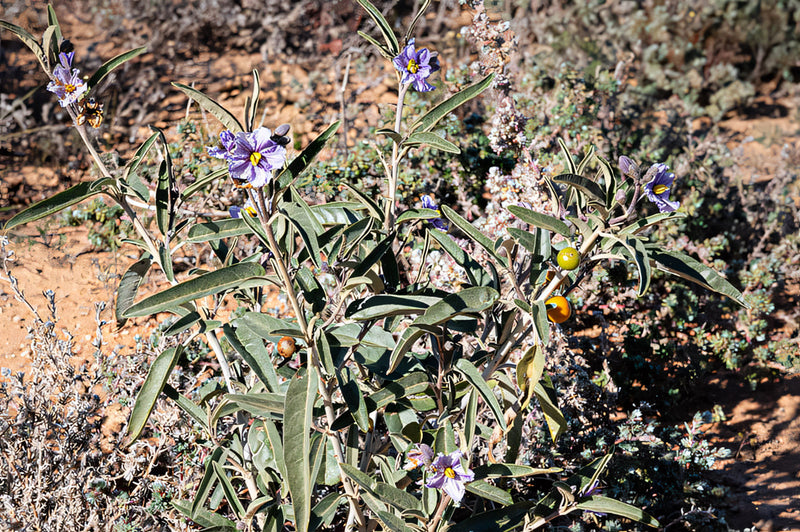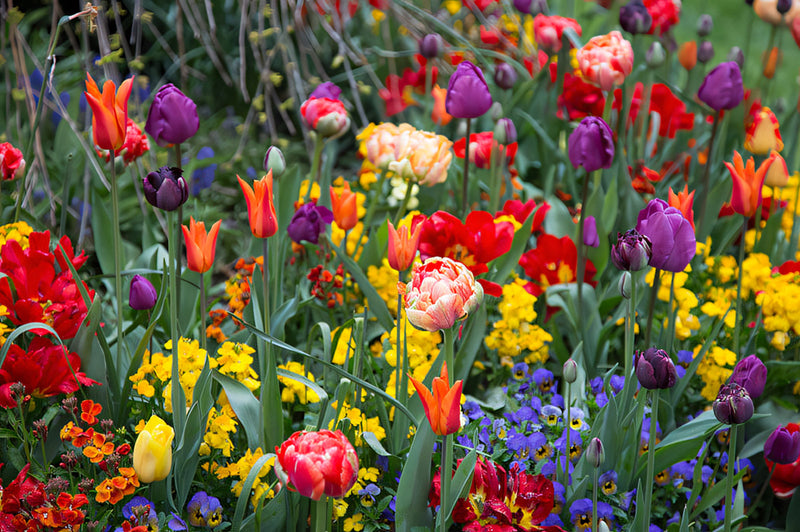

Discover the Bounty of Native Australian Plants
Australia's Indigenous communities have a profound connection to the land, understanding the unique properties of native plants for both culinary and medicinal uses. This ancient knowledge, passed down through generations, highlights the remarkable biodiversity of the Australian landscape.
Why not seek out these native alternatives for your next gardening project?
Bush Tomato (Desert Raisin)
The Bush Tomato, also known as the Desert Raisin, is a small, round fruit that grows in the arid regions of Australia. Indigenous Australians have long harvested these tomatoes, which are rich in antioxidants and vitamins. They can be eaten raw or dried and are often used in sauces, chutneys, and as a flavouring in various dishes.
Medicinal use: The Bush Tomato has been used traditionally to treat sore throats and colds, leveraging its nutritional benefits to boost immunity.
Native Peppermint (Mentha Australis)
Native Peppermint, or River Mint, is found along the waterways of eastern Australia. Its leaves have a distinct Peppermint aroma and are used both fresh and dried in cooking.
Medicinal use: Indigenous Australians use Native Peppermint for its soothing properties, particularly in treating coughs, colds and digestive issues. A tea made from its leaves can act as a natural remedy for headaches and fevers.
Native Rosemary (Westringia Fruticosa)
Known as Coastal Rosemary, this plant is not a true Rosemary but shares a similar aroma and is used similarly in cooking. It grows along the coastal regions and is prized for its resilience and fragrant leaves.
Medicinal use: Coastal Rosemary has been traditionally used as an antiseptic and to treat skin conditions. It's also used in infusions to alleviate respiratory problems.
Native Basil (Ocimum Tenuiflorum)
While not identical to the culinary Basil we commonly use, Native Basil has a unique flavour and is used in various traditional dishes. Indigenous Australians appreciate its aromatic qualities.
Medicinal use: Native Basil is known for its antibacterial and anti-inflammatory properties. It has been used in traditional medicine to treat colds, skin infections and digestive disorders.
Lemon Myrtle (Backhousia Citriodora)
Though not true Lemongrass, Lemon Myrtle is often used as a substitute due to its strong lemon scent. It is native to the subtropical rainforests of Queensland and northern New South Wales.
Medicinal use: Lemon Myrtle has been used by Indigenous Australians for its antimicrobial properties. It's used in teas to treat sore throats, colds and stomach upsets. The essential oils are also applied topically for their antiseptic properties.
Native Apple (Muntries)
Muntries, also known as Emu Apples or Native Cranberries, are small berries that grow in the coastal regions of southern Australia. They are rich in antioxidants and have a sweet, spicy flavour.
Medicinal use: Traditionally, Muntries have been used for their anti-inflammatory properties. They are consumed to promote general health and are believed to aid in digestion and skin health.
Warrigal Greens (Tetragonia Tetragonioides)
Also known as native spinach, Warrigal Greens are a leafy vegetable that grows along the coastlines of Australia. They were a staple in the diet of Indigenous Australians and are rich in vitamins and minerals.
Medicinal use: Warrigal Greens have been used to treat scurvy due to their high Vitamin C content. They are also believed to have antioxidant properties and are used to support overall health.
Why Grow Native Plants?
The traditional knowledge of Indigenous Australians offers a treasure trove of insights into sustainable living. Native plants are not only good for your health but also the environment. Having adapted to Australia's harsh climate over millennia, they require little water, no fertiliser and provide the perfect habitat, food and shelter for native animals, reptiles and insects.
Caring for Your Natives
Keep your native plants healthy by installing a drip irrigation system, using products such as Drip Eze, which is designed to deliver water directly to the roots. And combining this with a tap timer means you can precisely control when, where and how long to water, further reducing wastage.
